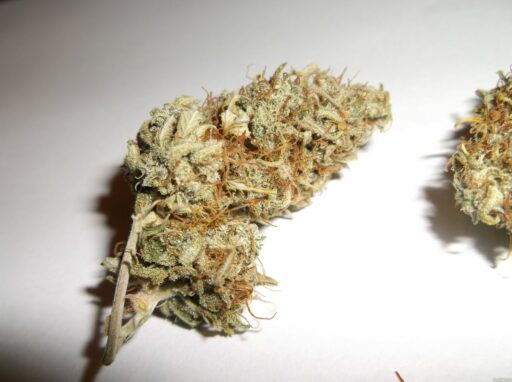The exploration of medical marijuana as a remedy for back pain is not just a contemporary trend but a significant shift in the paradigm of pain management. With an increasing number of studies and patient testimonials supporting its efficacy, medical marijuana is being considered as a potentially safer and more effective alternative to traditional pain medications, including opioids. This article delves into the multifaceted nature of medical marijuana in the context of back pain, from its analgesic effects and role in chronic pain management to the legal and holistic aspects that surround its use.
Key Takeaways
- Medical marijuana has shown promise in managing chronic back pain, offering analgesic and anti-inflammatory properties that can reduce dependence on traditional pharmaceuticals.
- Comparative studies and patient testimonials suggest that cannabis may be as effective, if not more so, than traditional pain medications, with fewer side effects.
- Legal challenges persist, but state-level legalization is associated with reductions in opioid prescriptions and improved access to cannabis for pain relief.
- Research indicates that medical marijuana could play a significant role in reducing opioid dependence, signaling a potential shift in future pain management strategies.
- Combining medical marijuana with other therapies like acupuncture, physical therapy, and mindfulness practices may offer synergistic effects, enhancing overall pain relief and quality of life.
Understanding the Analgesic Effects of Medical Marijuana

The Science Behind Cannabis as a Pain Reliever
The quest for effective pain relief has led to a growing interest in the therapeutic potential of medical marijuana. Cannabis strains for pain relief offer a natural and potentially transformative approach to managing chronic conditions. By leveraging the analgesic and anti-inflammatory properties of cannabis, individuals can find relief from pain while minimizing their dependence on traditional pharmaceuticals.
Cannabis contains various compounds, including cannabinoids like THC and CBD, which interact with the body’s endocannabinoid system to modulate pain perception. Understanding the different strains and their unique cannabinoid profiles allows individuals to make informed choices to effectively manage their pain and improve their well-being.
The synergistic action of opioid and cannabinoid co-administration has been highlighted in research, suggesting a potential for enhanced pain relief when these substances are used together.
The benefits of cannabis for pain relief include:
- Natural Analgesic: Demonstrated analgesic properties for various types of pain.
- Anti-inflammatory Effects: Potential reduction of pain and inflammation.
- Balancing THC and CBD: Personalized pain management through the adjustment of THC-to-CBD ratios in strains.
Comparative Studies: Cannabis vs. Traditional Pain Medications
The quest for effective pain management solutions has led to a growing body of research comparing the efficacy of medical marijuana to traditional pain medications. Studies reveal that cannabinoids, particularly THC, engage with the endocannabinoid system to alleviate pain, offering a potential alternative to narcotics and opioids that are fraught with risks such as addiction and adverse side effects.
The analgesic properties of cannabis, coupled with its anti-inflammatory effects, provide a dual approach to pain relief that is both natural and transformative.
A summary of findings from various studies is presented below:
- Medical cannabis and its derivatives have been shown to reduce pain intensity, particularly in cancer patients.
- THC’s interaction with CB1 and CB2 receptors is central to its pain-relieving capabilities.
- The variety of cannabis strains allows for an individualized pain management strategy, aligning with specific patient needs and preferences.
- Cannabis offers a reduced dependency on pharmaceuticals, minimizing the risk of adverse side effects and dependency issues.
These insights suggest that medical marijuana could reshape the landscape of pain management, especially for chronic conditions like back pain.
Patient Testimonials: Personal Accounts of Relief
The journey towards relief from back pain through medical marijuana is often best illustrated by those who have experienced it firsthand. Elizabeth P. shares a sentiment echoed by many, stating that her visit with a cannabis-informed doctor was a comforting affirmation of support in her treatment journey.
- Ashley describes a dramatic improvement in her overall quality of life, attributing her success to medical cannabis and THC. Her story, among others, is featured in literature that delves into the transformative effects of cannabis.
The engagement of patients in their treatment, especially with complex topics like cannabis, is crucial. It fosters a sense of hope and showcases the spectrum of benefits that cannabis therapies can offer.
Justice S. recounts an excellent experience from start to finish, praising the informative and compassionate care received from a cannabis-specialized physician. Similarly, Ellison M. felt comfortable and supported, despite her shyness, highlighting the importance of a patient-centered approach in medical cannabis treatment.
The Role of Medical Marijuana in Chronic Back Pain Management

Case Studies: Efficacy in Long-Term Pain Reduction
Recent case studies have highlighted the potential of medical marijuana in providing long-term relief for chronic back pain sufferers. A meta-analysis of clinical studies involving cancer patients revealed a significant reduction in pain after three months of medical cannabis treatment, with a standardized mean difference of -0.19.
The following table summarizes findings from various studies:
| Study ID | Patient Group | Treatment | Outcome |
|---|---|---|---|
| 1 RCT | Cancer Patients | Medical Cannabis | Pain Reduction |
| 2 Prospective | Cancer Patients | Medical Cannabis | Pain Reduction |
| 1 Retrospective | Cancer Patients | Medical Cannabis | Pain Reduction |
These studies collectively underscore the efficacy of medical marijuana in managing pain over extended periods. However, it is crucial to consider the individual variability in response to cannabis-based treatments.
While the data is promising, further research is needed to fully understand the long-term safety and tolerability of medical marijuana, especially in comparison to traditional opioid therapies.
Integrating Cannabis into Pain Management Regimens
The integration of cannabis into pain management regimens offers a promising alternative for those suffering from chronic back pain. By understanding the unique properties of different cannabis strains, patients can tailor their approach to pain relief. The cannabinoids THC and CBD are key players in modulating pain perception through the body’s endocannabinoid system, allowing for a more personalized pain management strategy.
Patience and experimentation are crucial in determining the optimal dosage and method of administration. Working with healthcare professionals ensures that patients can maximize the therapeutic benefits while mitigating risks.
The potential of cannabis to alleviate chronic pain extends beyond the physical. Many individuals report not only a reduction in pain but also an improvement in their overall quality of life. This dual benefit underscores the importance of considering cannabis as part of a comprehensive pain management plan.
The table below outlines the comparative reduction in opioid consumption among patients who integrated cannabis into their treatment:
| Year | Opioid Reduction (%) |
|---|---|
| 2021 | 25 |
| 2022 | 30 |
| 2023 | 35 |
While the promise of cannabis is clear, the journey to its widespread acceptance in medical practice is fraught with challenges, including legal hurdles and the need for patient education. Nonetheless, the ongoing research and development of prescribing guidelines are paving the way for safer and more effective treatments.
Challenges and Considerations in Treating Back Pain with Cannabis
While the therapeutic benefits of medical cannabis for chronic pain are supported by research, the path to its integration into pain management is fraught with challenges. The complexity of cannabis laws across states presents a significant hurdle, affecting everything from physician guidance to patient access.
- Consultation with Healthcare Professionals is crucial before using cannabis for pain relief. Tailored advice is necessary due to the varied responses to cannabis and individual medical histories.
- The inconsistencies in state policies create difficulties in standardizing care and sharing medical records.
- Understanding the interaction with the endocannabinoid system, particularly how THC activates CB1 and CB2 receptors, is vital for appreciating its analgesic potential.
The potential of medical cannabis as a treatment option is undeniable, but it requires a cautious and evidence-based approach to ensure patient safety and efficacy.
The perceptions of patients regarding cannabis as a treatment for back pain are overwhelmingly positive, with a significant majority believing in its effectiveness. However, the multifaceted nature of cannabis treatment necessitates a comprehensive understanding of its opportunities and limitations.
Navigating the Legal Landscape of Medical Marijuana for Pain Relief

State-Level Legislation and Access to Cannabis
The accessibility of medical marijuana for back pain relief is heavily influenced by state-level legislation, which varies widely across the United States. Each state’s program has its own set of rules and regulations, impacting the ease with which patients can obtain cannabis treatments. For instance, some states have expanded their medical cannabis programs to include new qualifying conditions and increased possession limits, while others are still debating the inclusion of such provisions.
In states like Colorado and New York, efforts are being made to address unlicensed marijuana businesses and to allow safe consumption sites. Meanwhile, states such as Louisiana and Pennsylvania are considering a range of cannabis reform bills, with some lawmakers expressing opposition to legalization. The complexity of navigating these legal waters is further compounded by federal regulations and the absence of uniformity in policies such as home cultivation and equity provisions.
The evolving state-level legislation not only affects patient access but also shapes the commercial landscape of medical marijuana, influencing everything from licensing to sales.
Here’s a snapshot of recent legislative actions:
- Colorado: Approved a bill for safe consumption sites.
- New York: Lawmakers pushing for actions against unlicensed businesses.
- Louisiana: Considering several cannabis reform bills.
- Pennsylvania: Representative opposes marijuana legalization.
- Massachusetts: Set to release guidance on intoxicating hemp products.
These legislative changes are a testament to the dynamic nature of the medical marijuana field, with ongoing debates and adjustments reflecting the diverse perspectives and needs of different states.
The Impact of Federal Reclassification on Patients and Providers
The proposed reclassification of marijuana at the federal level marks a significant shift in the approach to cannabis regulation. This move, prompted by federal health officials recognizing marijuana’s lower public health risk and potential medical benefits, could harmonize the fragmented landscape of state-level policies.
For patients, federal reclassification could mean broader access to medical marijuana, potentially leading to more consistent treatment experiences across state lines. Providers might see a reduction in the bureaucratic hurdles currently associated with prescribing and managing cannabis-based therapies.
The reclassification could also pave the way for insurance coverage of medical marijuana treatments, addressing a critical barrier to access for many patients.
However, the transition to a new federal status for marijuana will not be without its challenges. Medical professionals will need to adapt to new regulations, and there may be a period of adjustment as the healthcare system integrates these changes.
Insurance Coverage and the Cost of Medical Marijuana Treatments
The financial aspect of medical marijuana treatments is a significant concern for many patients. Insurance coverage for medical marijuana remains elusive, primarily due to its classification under federal law. This lack of coverage means that patients must often bear the full cost of treatment, which can be prohibitive for those on a fixed income or dealing with long-term chronic conditions.
While some states have legalized medical marijuana, the disconnect between state and federal legislation creates a complex landscape for insurance providers. Patients are left to navigate this terrain, often without clear guidance or support.
The cost of medical marijuana can vary widely depending on the state, the dispensary, and the form of cannabis prescribed. Below is a table illustrating the average cost range for medical marijuana in different forms:
| Form of Cannabis | Average Cost Range |
|---|---|
| Flower | $200 – $400 / oz |
| Concentrates | $50 – $100 / gram |
| Edibles | $2 – $5 / piece |
| Tinctures | $30 – $90 / bottle |
Efforts to reduce the cost of medical marijuana treatments include advocating for insurance coverage and lowering the price of products and consultations. These measures are crucial for improving access to this potentially life-altering treatment.
Medical Marijuana as an Alternative to Opioids

Research on Cannabis Reducing Opioid Dependence
The intersection of medical marijuana and opioid addiction treatment has become a focal point in the battle against the opioid epidemic. Studies indicate that medical cannabis may significantly diminish opioid consumption, with patients reporting that cannabis alone can be more effective than combining it with opioids. This shift could represent a pivotal change in managing addiction and chronic pain.
- Medical cannabis as a substitute for opioids has shown promise in reducing the need for these potent painkillers.
- Legal access to cannabis correlates with a decrease in nonprescribed opioid use.
- Anecdotal and data-driven research suggests cannabis can aid in opioid reduction or cessation.
The potential of cannabis to serve as a therapeutic alternative in opioid dependence is underscored by its ability to alleviate pain without the high risk of addiction associated with opioid use.
However, the effectiveness of cannabis in treating opioid addiction is not without contention. A recent study involving thousands of individuals undergoing treatment for opioid use disorder suggested that cannabis is not an effective treatment for opioid addiction. This underscores the need for continued research and development of comprehensive prescribing guidelines to ensure safe and effective use of cannabis in medical practice.
Patient Preferences: Choosing Cannabis Over Opioids
The opioid crisis has catalyzed the exploration of alternative pain management solutions, with medical marijuana emerging as a preferred option for many patients. The shift towards cannabis is not only due to its efficacy but also because of the desire to avoid the addictive and potentially harmful side effects associated with opioids.
- Reduction in opioid use: Patients report a decrease in opioid consumption when incorporating medical marijuana into their treatment.
- Cost considerations: Despite higher costs for legal cannabis products, patients often find the value in reduced opioid dependency.
- Efficacy: Some patients find cannabis alone more effective than combining it with opioids.
The integration of medical marijuana into pain management regimens requires careful consideration of dosing, legal regulations, and patient education to ensure safe and effective treatment.
The preference for medical marijuana over opioids is not without its challenges, including the need for ongoing research and the development of comprehensive prescribing guidelines. However, the potential benefits for chronic pain sufferers make it a compelling choice for many.
The Future of Pain Management: Policy Implications and Trends
As the medical community continues to confront the opioid crisis, the exploration of cannabinoids as a viable alternative in pain management is gaining momentum. The potential of medical marijuana to reshape pain treatment is underscored by its promise of reduced dependency on opioids, a critical factor in addressing the public health emergency that claims over 130 lives daily in the United States due to opioid-related overdoses.
The integration of medical marijuana into pain management protocols not only offers a more compassionate approach but also emphasizes the need for personalized treatment strategies. This shift necessitates a multi-disciplinary effort encompassing education, research, and policy reform to fully harness the therapeutic benefits of cannabinoids.
The following points highlight key policy implications and emerging trends:
- The review and potential federal reclassification of cannabis, as indicated in recent State of the Union addresses, could significantly alter the legal and medical landscape.
- Insurance coverage for medical marijuana treatments remains a contentious issue, with calls for reduced costs and improved access for patients.
- A growing body of research supports the efficacy of THC in activating the endocannabinoid system, offering a scientific basis for policy changes.
As we move forward, it is imperative that stakeholders engage in open dialogue and collaborate to create a more effective, empathetic, and personalized pain management paradigm.
Holistic Approaches: Combining Medical Marijuana with Other Therapies

Synergistic Effects of Cannabis and Acupuncture
The combination of medical marijuana and acupuncture is emerging as a promising approach for managing chronic back pain. Both therapies are known for their analgesic properties and have been used independently for pain relief. However, when used together, they may offer enhanced benefits due to their synergistic effects.
- Acupuncture is believed to stimulate the body’s natural painkillers, such as endorphins and serotonin.
- Medical marijuana, particularly its active compounds THC and CBD, can modulate pain perception and inflammation.
The potential for improved patient outcomes through the combined use of these therapies is significant, as they may reduce the need for conventional pain medications, which often come with a risk of side effects and dependency.
While more research is needed to fully understand the mechanisms behind this synergy, preliminary studies suggest that the integration of cannabis and acupuncture could lead to better pain management strategies. This holistic approach aligns with the growing interest in complementary and alternative medicine, offering patients a more natural path to pain relief.
Cannabis Topicals and Physical Therapy
The integration of cannabis topicals with physical therapy presents a promising avenue for individuals suffering from back pain. Cannabis-infused creams and balms, when applied to the skin, can offer localized relief without the psychoactive effects typically associated with cannabis consumption. This method of treatment is particularly suitable for muscle, joint, or exercise-induced pain.
Physical therapists are increasingly recognizing the potential benefits of incorporating cannabis topicals into their treatment regimens. Patients report not only a reduction in pain but also an improvement in mobility and a decrease in inflammation. The following list outlines the key advantages of this combined approach:
- Targeted pain relief
- Reduced inflammation
- Enhanced mobility
- Minimal side effects
While the use of cannabis topicals in conjunction with physical therapy is still an emerging field, early feedback from patients and practitioners suggests a synergistic effect that could redefine pain management strategies.
Despite the anecdotal evidence and growing interest, rigorous studies are needed to fully understand the efficacy and safety of this combined therapy. As the medical community continues to explore the therapeutic properties of THC and other cannabinoids, the role of cannabis topicals in physical therapy remains a compelling topic for further research.
Mindfulness Practices Enhanced by Cannabis Use
The integration of medical marijuana into mindfulness practices has opened a new avenue for individuals seeking holistic pain relief. Cannabis is believed to enhance the focus and relaxation necessary for effective mindfulness exercises, potentially amplifying their benefits for back pain sufferers.
- Mindfulness meditation can reduce stress and pain perception.
- Cannabis may deepen meditation by promoting relaxation.
- Combining both may lead to improved pain management outcomes.
The synergy between cannabis and mindfulness practices could represent a transformative approach to pain management, emphasizing the importance of mental well-being in physical health.
While empirical data is still emerging, anecdotal evidence suggests that patients who incorporate cannabis into their mindfulness routines experience a more profound sense of calm and pain relief. This holistic approach underscores the potential of combining traditional and alternative therapies for a more comprehensive pain management strategy.
Embracing the Future of Pain Management: The Role of Medical Marijuana
As we conclude our exploration of medical marijuana’s role in alleviating back pain, it is clear that this natural remedy holds significant promise. The convergence of anecdotal success stories, emerging clinical research, and a growing acceptance within the medical community underscores the potential of cannabis to offer a safer, effective alternative to traditional pain medications, including opioids. While challenges such as legal barriers, insurance coverage, and societal stigma remain, the strides made in understanding and utilizing cannabis for pain relief are encouraging. It is imperative that we continue to advance research, broaden access, and educate both healthcare professionals and patients on the responsible use of medical marijuana. By doing so, we can unlock a future where chronic pain management is more compassionate, personalized, and free from the grip of opioid dependency.
Frequently Asked Questions
How does medical marijuana provide pain relief for back pain?
Medical marijuana contains cannabinoids that interact with the body’s endocannabinoid system, which can help reduce inflammation and alter pain perception, providing relief from back pain.
Is medical marijuana more effective than traditional pain medications for back pain?
Some studies and patient testimonials suggest that medical marijuana may be as effective or even more effective for certain individuals, especially those who have not found relief with traditional medications. However, effectiveness can vary from person to person.
Can medical marijuana be used as a long-term treatment for chronic back pain?
Yes, medical marijuana is being used by some patients as a long-term treatment for chronic back pain, particularly when other treatments have failed to provide adequate relief.
What are the legal considerations for using medical marijuana for back pain?
The legal considerations depend on the state-level legislation, as most states in the U.S. allow medical marijuana for chronic pain, but it remains illegal at the federal level. Patients should check their local laws and regulations.
Can medical marijuana help reduce opioid dependence in pain management?
Research suggests that medical marijuana may help reduce opioid prescriptions and dependence, as some patients use it as a substitute for opioids in managing their pain.
Are there other therapies that can be combined with medical marijuana for back pain treatment?
Yes, medical marijuana can be combined with other therapies such as acupuncture, physical therapy, and mindfulness practices to potentially enhance pain relief and overall treatment efficacy.





